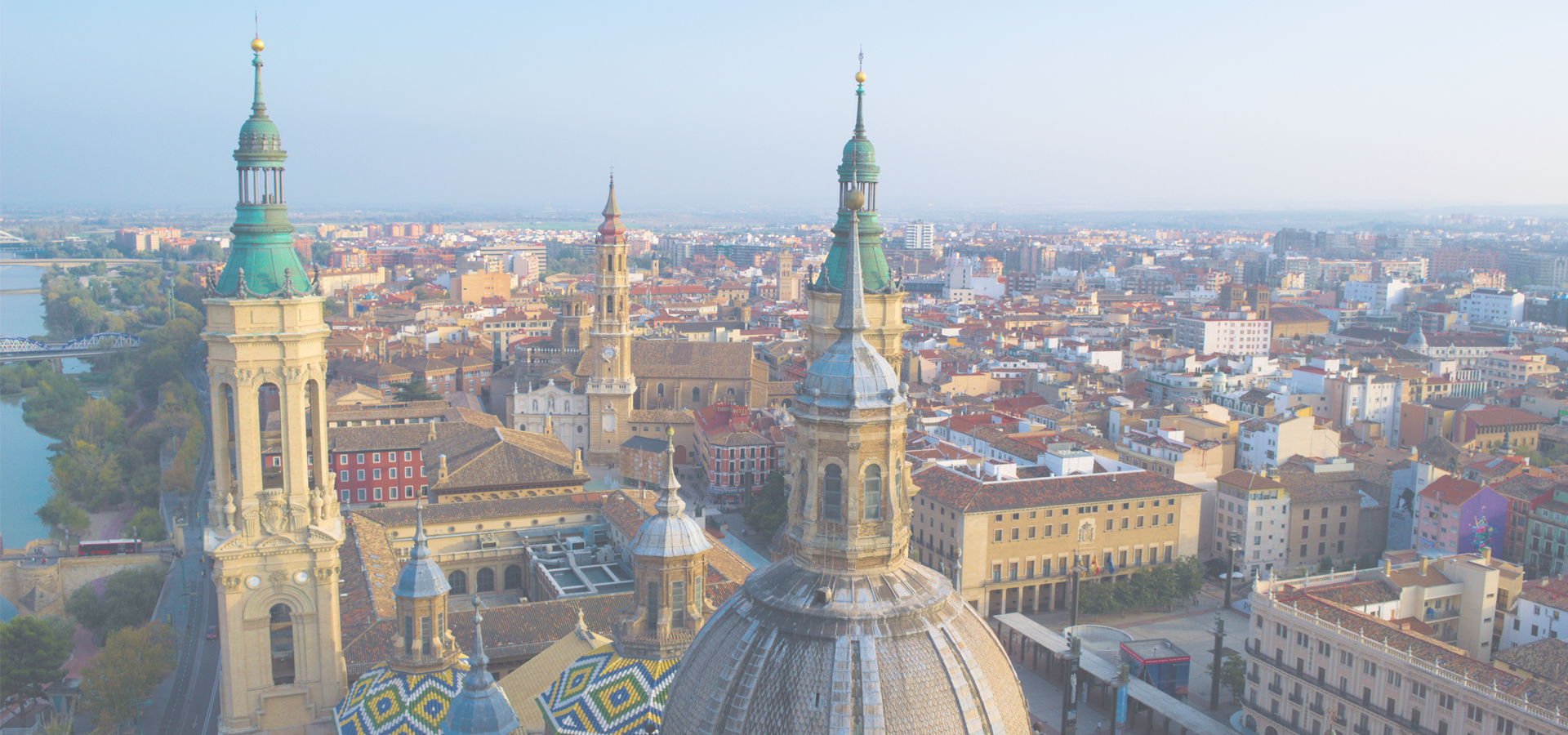Calatayud, Province of Zaragoza, Aragon, Spain
🇪🇸 Calatayud is a municipality in the Province of Zaragoza, within Aragón, Spain, lying on the river Jalón, in the midst of the Sistema Ibérico mountain range. It is the second-largest town in the province after the capital, Zaragoza, and the largest town in Aragón other than the three provincial capitals. It is the seat of the comarca of Calatayud. Its population has been declining during the last decade due to migration.
The town motto is Muy noble, leal, siempre augusta y fidelísima ciudad de Calatayud ("The very noble, loyal, always august and most faithful town of Calatayud"). The first democratic elections after General Franco's regime were called for 15 June 1977. In Calatayud they were held one day earlier than all the rest of Spain, in order to prepare for a visit there by King Juan Carlos I.
1Highways and railways The town is located by the Carretera Nacional N-II highway, the Autovía A-2 and the N-234, among other local roads.
The AVE Madrid–Barcelona high-speed rail line, as well as the Renfe line from Madrid to Barcelona stop in Calatayud.
1History The city was founded on the site of a Celt-Iberian settlement by the Romans with the name Augusta Bilbilis and was the birthplace of the poet Martial in 40 CE. The site of the ruins of Augusta Bilbilis are approximately four km to the north of the modern city of Calatayud. The modern town was founded by the Moors around the Ayyub castle, circa 716 CE.
The name Calatayud came from the Arabic قلعة أيوب Qal‘at ’Ayyūb, "the qalat (fortress) of Ayyub". The ancient inhabitants of Bilbilis moved to the new site. Occupying a strategic placement between the central meseta of Spain and the Ebro valley, the city retained its importance in succeeding centuries. By the eleventh century a substantial Jewish community was present, surviving the reconquista until the expulsion of the Jews from Spain in 1492. Judaica texts from this era refer to Calatayud as קלע איוב, קלעה איוב, or קלעיה איוב (Qalʿah Ayuv, Qalʿ Ayuv, Qalʿiya Ayuv). The city was conquered from the Muslims by Alfonso I of Aragón in 1119. Many surviving examples of mudéjar church architecture show that the Moorish influence lived on.
During the Peninsular Wars a notable siege of French-occupied Calatayud led to its capture by guerillas in 1811. The city was the capital of its own province in 1822–23, during the Trienio Liberal.
The town suffers from sinkholes.
1Tourist Industry One of the most notable Mudéjar towers of Aragón is the 15th-century bell tower of the collegiate church of Santa María, which was built on the site of a mosque. A Renaissance doorway was added in 1528. • Santo Sepulcro, built in 1141, and restored in 1613, was long the principal church of the Spanish Knights Templar. • This qalʿat is the biggest and oldest one on the Iberian peninsula. • The church of "San Pedro" was founded by Ferdinand II of Aragón and it was there that the first cortes (parliament) of Aragon was held in 1411.
1Economy The majority of employment is in the service sector and in agriculture. Agriculture consists primarily of apple and pear orchards, although there are also some vineyards in the area). Industry is much less developed, although there are two industrial estates (La Charluca and Mediavega) and the creation of a third is being studied.
1Quarters and villages • Quarters: Huérmeda, Torres and Embid de la Ribera • Villages: Campiel, Carramolina, Marivella, Ribota, San Ramón and Terrer
1Fiestas • Easter • Pilgrimage (romeria) in honour of el Cristo de Ribota, May 1 • Saint Íñigo's Day, June 1 • Saint Roch's Day, August 14–16 • Virgen de la Peña, September 8–12.
1Traditions There is a popular Spanish song that says (translated) "If you go to Calatayud / ask for Dolores (a popular female name) / she is a very nice girl / fond of granting favours" that captures the (traditional) fame of girls in Calatayud. Given that reputation, traditionally boys went to the town in order to "ask for Dolores" to be "favoured" by local girls. Nowadays this tradition has dismissed although in festivities, boys from the surroundings, even from Zaragoza, visit the town with that aim.
1Europe/Madrid/Saragossa

🇺🇸 New London 41.355
🇪🇸 Cornellà de Llobregat 41.356
🇪🇸 L'Hospitalet de Llobregat 41.363
🇵🇹 Póvoa de Varzim 41.367
🇺🇸 Bowling Green 41.367
🇵🇹 Felgueiras 41.367
🇪🇸 Sant Feliu de Llobregat 41.383
🇵🇹 Vila do Conde 41.35
🇪🇸 L' Hospitalet de Llobregat 41.35
🇪🇸 Vilafranca del Penedès 41.345
🇪🇸 Sant Boi de Llobregat 41.336
🇫🇷 Cherbourg-en-Cotentin -1.625
🏴 Newcastle upon Tyne -1.609
🏴 Cramlington -1.589
🏴 Burton upon Trent -1.633
🏴 Burton-on-Trent -1.669
🏴 Stratford-upon-Avon -1.7
🏴 Stratford-on-Avon -1.708
Locations Near: Calatayud -1.63333,41.35
🇪🇸 Zaragoza -0.881,41.652 d: 71.1
🇪🇸 Soria -2.469,41.765 d: 83.4
🇪🇸 Teruel -1.105,40.343 d: 120.5
🇪🇸 Estella -2.017,42.667 d: 149.8
🇪🇸 Logroño -2.446,42.465 d: 141
🇪🇸 Cuenca -2.15,40.067 d: 149.2
🇪🇸 Huesca -0.409,42.133 d: 133.8
🇪🇸 Pamplona -1.644,42.818 d: 163.3
🇪🇸 Guadalajara -3.164,40.63 d: 151.4
Antipodal to: Calatayud 178.367,-41.35
🇳🇿 Hastings 176.843,-39.645 d: 19785.9
🇳🇿 Napier 176.9,-39.505 d: 19775.3
🇳🇿 Gisborne 178.016,-38.659 d: 19714.3
🇳🇿 Masterton 175.664,-40.95 d: 19784.5
🇳🇿 Palmerston North 175.61,-40.357 d: 19758.3
🇳🇿 Upper Hutt 175.05,-41.133 d: 19736.7
🇳🇿 Hutt 174.917,-41.217 d: 19726.5
🇳🇿 Lower Hutt 174.917,-41.217 d: 19726.5